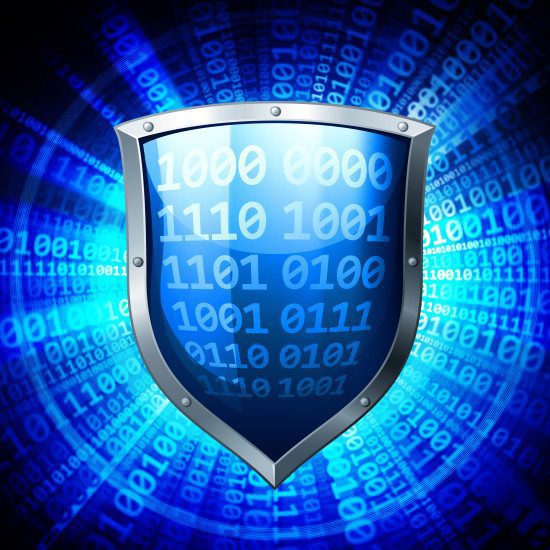Digital data has become central to all our lives and businesses from the largest multi-national organisations to the smallest family run start-ups now store the majority of their data in bytes instead of boxes. Current estimates are that there is now up to five zettabytes (the equivalent of one trillion gigabytes) of information on the planet and it could be ten times that by the end of the decade.
Many of us blissfully assume that the data we store electronically will be eternally safe. However, the real world is fraught with potential ‘data disasters’. The data loss scenarios painted in the media may focus on cyber attacks or natural disasters, but often it is the everyday occurrences such as accidental file deletion, an overnight waterpipe breakage or spilling a hot drink on a piece of hardware that can cause the biggest disruption to a business if data is not properly stored and backed up.
Given the unprecedented growth and reliance on digital data, it is key for SMBs to understand the complex issue of storage and the variety of solutions available to ensure core data and processes remain safe – regardless of what’s thrown at them.
So, how can businesses ensure they remain protected against traditional threats but also the more silent forms of data corruption?
There are simply five layers of data protection that all businesses need to consider :
- Data should be written across multiple drives for RAID protection to protect against the inevitable risk of hardware disk failure.
- Data should be automatically protected against the phenomenon of bit rot, where data is actually corrupted at the very lowest level – the bits. This slow deterioration in the integrity of data stored on storage media can result in anything from pixel errors in JPEGs to a corrupted database.
- Data should be continuously protected during normal business operations, allowing for easy restoration of data from virtually any point in time. Snapshot technology provides point-in-time recovery when a disaster strikes or files are deleted.
- Data must be secured adequately in real-time against viruses and malware through up-to-date security solutions; not only at the firewall but also on the storage device itself in case someone brings malware stored on a USB drive straight into the office.
- A second copy of data – and operating system images etc. – should always be stored at a secure offsite location for disaster recovery. In today’s world this is most elegantly and cost-effectively achieved with a sophisticated and automated replication solution, but could also be via a USB drive, traditional tape or backup in the cloud.
In today’s ever connected environment, data is growing exponentially, but its importance is arguably growing even faster. Whether it’s architectural drawings, customer databases office files and documents or family photos, protecting information is critical. Playing Russian roulette with data, which is often the intellectual property and customer data core of a modern business, is dangerous, not to mention could contravene data protection laws in many industries.
The more layers of protection a business employs, the less of a risk they face; whether it be the potential loss of revenue, regulatory fines or disaster recovery outages. Yet historically most SMB storage solutions typically address only two or three of the layers outlined above. This, coupled with the fact that many businesses, particularly SMBs, don’t have the time or resources to dedicate to complicated backup and recovery processes, leaves them exposed to potentially catastrophic outcomes.
Many SMBs are still either not aware of the five layers of data protection or presume they are only available within expensive and complex enterprise solutions. However, a lot has happened in SMB storage technology and there are now affordable solutions available that fit the bill by adhering to the five layers of data protection. Thanks to the use of advanced file systems, these solutions offer snapshot-capability and data protection functions for files and shared storage without the need for extra software. They provide a level of data integrity (for example against data degradation and bit rot) that until recently was only available in much more expensive solutions. These technological developments mean that even should disaster strike SMBs can have peace of mind the impact on their operation and reputation will be minimal.[su_box title=”Peter Hannah, Regional Director of UK & Ireleand at Netgear” style=”noise” box_color=”#336588″] NETGEAR (NASDAQ: NTGR) is a global networking company that delivers innovative products to consumers, businesses and service providers. The Company’s products are built on a variety of proven technologies such as wireless, Ethernet and powerline, with a focus on reliability and ease-of-use. The product line consists of wired and wireless devices that enable networking, broadband access and network connectivity. These products are available in multiple configurations to address the needs of the end-users in each geographic region in which the Company’s products are sold. NETGEAR products are sold in approximately 39,000 retail locations around the globe, and through approximately 31,000 value-added resellers. The company’s headquarters are in San Jose, Calif., with additional offices in approximately 25 countries.[/su_box]
NETGEAR (NASDAQ: NTGR) is a global networking company that delivers innovative products to consumers, businesses and service providers. The Company’s products are built on a variety of proven technologies such as wireless, Ethernet and powerline, with a focus on reliability and ease-of-use. The product line consists of wired and wireless devices that enable networking, broadband access and network connectivity. These products are available in multiple configurations to address the needs of the end-users in each geographic region in which the Company’s products are sold. NETGEAR products are sold in approximately 39,000 retail locations around the globe, and through approximately 31,000 value-added resellers. The company’s headquarters are in San Jose, Calif., with additional offices in approximately 25 countries.[/su_box]
The opinions expressed in this post belongs to the individual contributors and do not necessarily reflect the views of Information Security Buzz.



